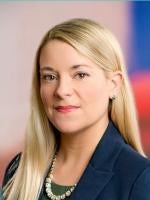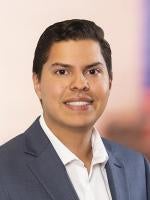In Sisvel International S.A. v. Sierra Wireless, Inc. et al., Nos. 22-1493, 22-1547 (Fed. Cir. 2023), Sierra Wireless challenged claims 1-10 of Sisvel’s U.S. Patent No. 6,529,561 (“the ’561 patent”) in an inter partes review. The Patent Trial and Appeal Board’s final written decision found claims 1-3 and 9 unpatentable, but upheld the patentability of claims 4-8 and 10.
The ’561 patent relates to wireless channel coding, which inserts redundant information into the digital data in a structured manner to combat noise and interference during radio transmission. Specifically, the ’561 patent uses link adaptation (changing the amount of redundancy inserted dynamically) and incremental redundancy (retransmission of blocks received in error, potentially with a different puncturing pattern).
The Board found that the Chen reference rendered obvious claims 1-3 and 9. The Board also found that claim 5 and 10 recited a means-plus-function claim limitation for “means for detecting” that the specification failed to disclose sufficient structure for and therefore the Board did not evaluate the unpatentability of claims 5-7, and 10, because it was “unable to conclude what structure is encompassed” by the “means for detecting” limitation. Furthermore, the Board found that Sierra’s expert testimony could not remedy the lack of sufficient structure disclosed in the specification.
The Board also found that Sierra’s motivation to combine Chen with certain GSM references was insufficient.
The parties cross-appealed the adverse findings against them.
Issues
The Federal Circuit considered several issues on appeal:
- Whether substantial evidence supports unpatentability based on Chen?
- Whether substantial evidence supports the Board’s finding of a lack of motivation to combine Chen with the GSM references?
- Whether the Board erred in failing to consider expert testimony with respect to whether a protocol name sufficient discloses an understood algorithm to a skilled artisan?
Holdings and Reasoning
1. Substantial evidence supported the Board’s unpatentability findings based on Chen.
Sisvel made two primary arguments. The Federal Circuit found both arguments unavailing. First, Sisvel argued that Chen failed to disclose a second puncturing pattern. The Federal Circuit disagreed and found that Chen disclosed an original transmission and a retransmission, with the transmissions using different code symbols from the output of the convolutional encoder. Sierra’s expert witness, Dr. Paul Kakaes, explained that “Chen’s selective transmission of selected code symbols from certain generators to refer to puncturing, such that the original transmission with only code symbols from generators g0 and g1 correspond to a ‘first puncturing pattern’ and the retransmitted packet with additional code symbols (e.g., g2) corresponds to a ‘second puncturing pattern.’”
Second, Sisvel argued that Chen failed to disclose the “combining” limitation and that Chen’s interleaving is different than the required “combining” limitation. The Federal Circuit disagreed again, and found that “combining as recited in claim 1” does not “exclude[] interleaving as taught by Chen.” In addition, despite Sisvel’s argument that Chen includes a statement that “retransmitted packets are interleaved (not combined), other teachings of Chen taught accumulating and combining packets.
2. Substantial evidence supported the Board’s finding of no motivation to combine.
The Federal circuit agreed with the Board and found that Sierra’s proposed combinations and rationales were “expressed at such a non-specific, high level of generality, they never made clear to the Board what portions of the references were being combined and why a skilled artisan would identify those particular elements for a combination.” Sierra’s rationales were found to be assertions that the references were analogous art without more to support motivation to combine, or too conclusory, lacking clarity, or both. The Federal Circuit noted that “[u]nder the circumstances, we cannot fault the Board for being at a loss in trying to decipher [Sierra’s] kitchen-sink of unclear and confusing motivation-to-combine arguments.
3. The Board erred in failing to consider expert testimony under Noah because the specification disclosed some algorithm and the sufficiency of adequate structure disclosed in the specification must be evaluated from the perspective of a skilled artisan.
Under Noah, for a means-plus-function claim, the case law regarding special purpose computer-implemented means-plus-function claims is divided into two cases: (i) cases where the specification discloses no algorithm and (ii) cases in which the specification discloses an algorithm but a party contends that the disclosure is inadequate.
In the first case where no algorithm is disclosed, the knowledge of skilled artisan is irrelevant. However, in the second case, the sufficiency of the disclosed structure must be evaluated in “light of the knowledge possessed by a skilled artisan.”
Here, Sierra relied on software protocols named in the specification, such as ARQ (automatic repeat request) and hybrid FEC/ARQ (forward error correction / automatic repeat request) as examples of structure – and it was not disputed that these protocols were well-understood and well-known to skilled artisans. The Federal Circuit agreed with Sierra that “the Board should have evaluated the protocols discussed in the specification in light of the knowledge of a skilled artisan and conducted an analysis appropriate to Noah group two.” The Board appeared to classify the case in Noah group one and completely disregarded Sierra’s expert witness testimony. Here, the Federal Circuit indicated that “for a means-plus-function limitation where the corresponding structure is an algorithm, the specification need not disclose all the details of the algorithm to satisfy the definiteness requirement of § 112 ¶ 2 so long as what is disclosed would be sufficiently definite to a skilled artisan.”
The Federal Circuit vacated and remanded for the Board to consider the expert testimony and specifically noted that its opinion does “not reach the merits of the factual question of whether the protocols identified in the ’561 patent’s specification disclose sufficient structure to satisfy § 112 ¶ 2” and left for the Board to answer that question under the proper Noah analysis because “the specification’s explicit reference to protocol names—which no party disputes refers to protocols known in the art—is sufficient to bring this case into Noah group two.”





 />i
/>i

